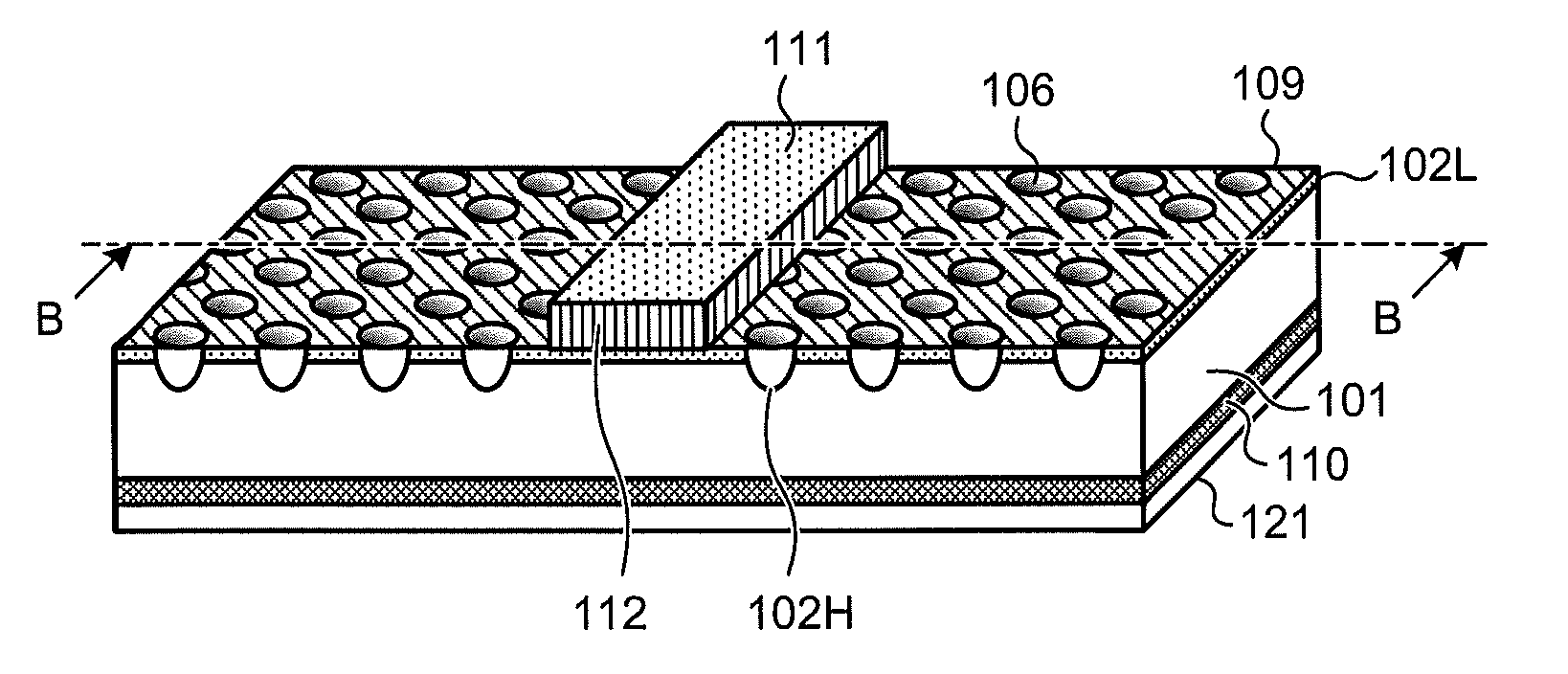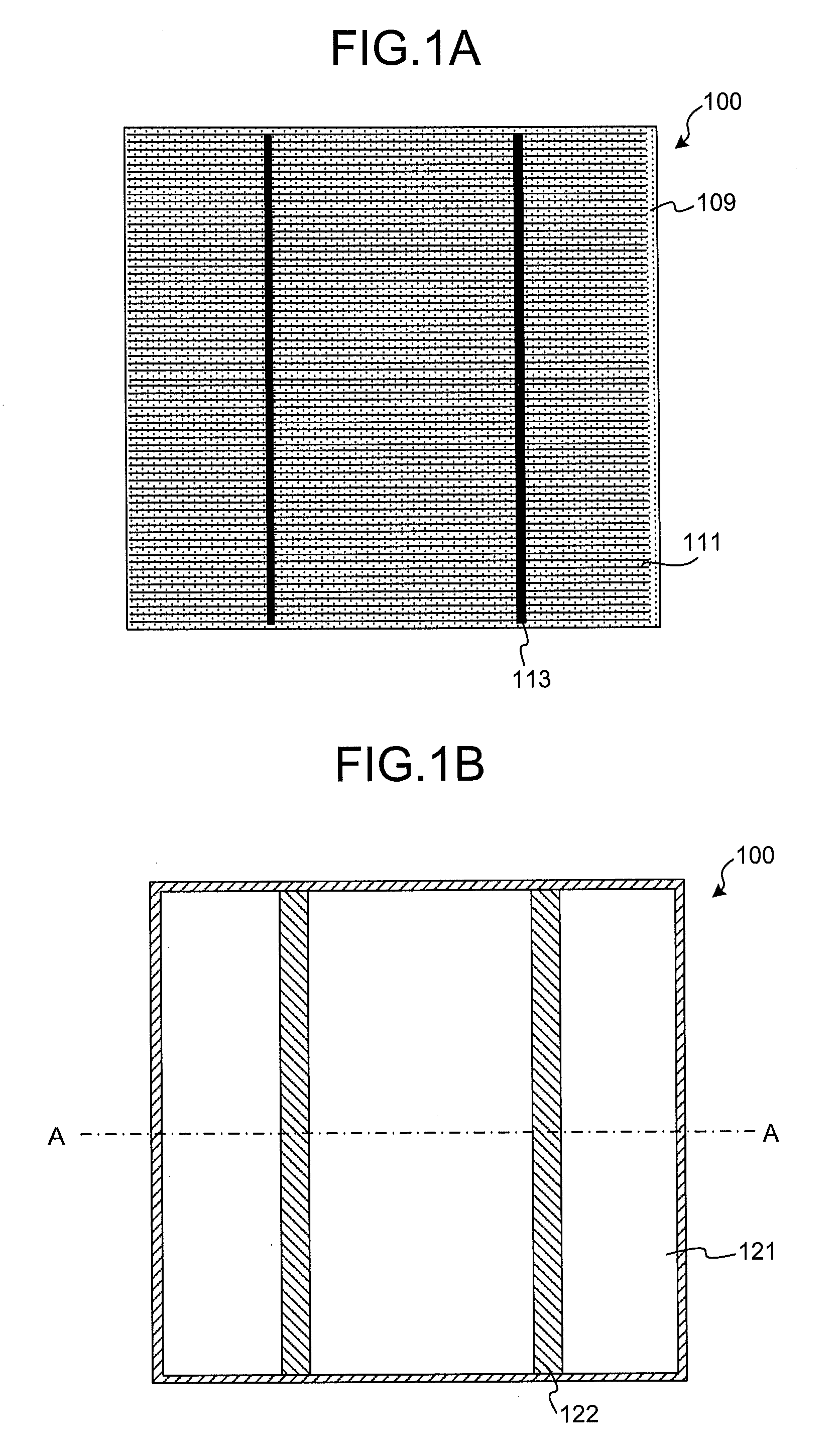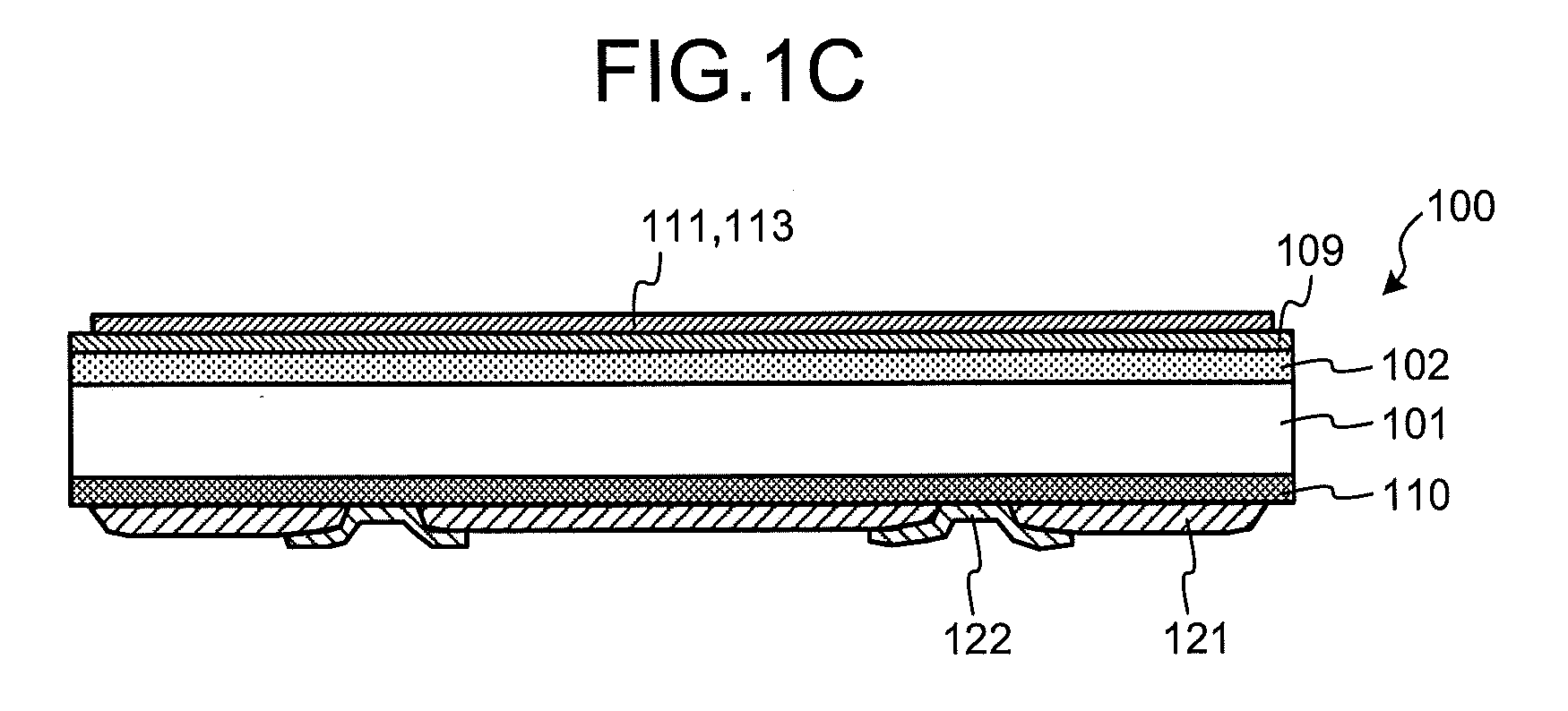Photovoltaic power device and manufacturing method thereof
a photovoltaic power and power device technology, applied in the field of photovoltaic power devices, can solve the problems of limiting the reflection ratio, and achieve the effects of reducing the reflection ratio of incident sunlight, low resistance, and photoelectric conversion
- Summary
- Abstract
- Description
- Claims
- Application Information
AI Technical Summary
Benefits of technology
Problems solved by technology
Method used
Image
Examples
first embodiment
[0075]First, prior to explanations of a configuration of a photovoltaic power device according to a first embodiment of the present invention, an outline of an entire configuration of a general photovoltaic power device is explained. FIGS. 1A to 1C are schematic views of an example of an entire configuration of a general photovoltaic power device, where FIG. 1A is a top view of the photovoltaic power device, FIG. 1B is a back view of the photovoltaic power device, and FIG. 1C is a cross-sectional view along A-A in FIG. 1B. A photovoltaic power device 100 includes a photoelectric conversion layer including a P-type silicon substrate 101 as a semiconductor substrate, an N-type diffusion layer 102 diffused with an N-type impurity formed on a surface at one principal surface (a light receiving surface) side of the P-type silicon substrate 101, and a P+ layer 110 containing a P-type impurity in a higher concentration than that of the silicon substrate 101 formed on a surface at a side of...
second embodiment
[0102]In the explanations of the first embodiment, after the high-resistance N-type diffusion layer 102H is formed within the concave portions 106 in FIG. 5G and FIG. 6G, the phosphorus glass layer in the low-resistance N-type diffusion layer 102L and on the high-resistance N-type diffusion layer 102H is removed in the hydrofluoric acid solution. Alternatively, the uppermost surface of the low-resistance N-type diffusion layer 102L and the high-resistance N-type diffusion layer 102H can be etched with a mixed liquid of hydrofluoric acid and nitric acid. The following process procedures are identical to those described in the first embodiment and thus explanations thereof will be omitted.
[0103]According to the second embodiment, after etching the phosphorus glass layer in the low-resistance N-type diffusion layer 102L and on the high-resistance N-type diffusion layer 102H, the uppermost surface of the diffusion layers 102L and 102H is etched with a mixed liquid of hydrofluoric acid a...
third embodiment
[0104]In the third embodiment, there is explained a case of forming openings in a method different from that of the first embodiment. FIG. 9 is an example of a configuration of a laser processing apparatus used to form openings of the third embodiment. The laser processing apparatus 200B includes the stage 201 on which an object to be processed such as the silicon substrate 101 is mounted, the laser oscillator 203 that outputs the laser beam 204, a first galvanomirror 211 that is arranged between the stage 201 and the laser oscillator 203 and guides the laser beam 204 to an optical path while scanning in an X-axis direction 212, and a second galvanomirror 213 that guides the laser beam 204 reflected by the first galvanomirror 211 to the optical path while scanning in a Y-axis direction 214.
[0105]In the laser processing apparatus 200B having this configuration, the laser beam 204 collected in a spot shape is irradiated to a predetermined position of the etching resistance film 103 on...
PUM
 Login to View More
Login to View More Abstract
Description
Claims
Application Information
 Login to View More
Login to View More - R&D
- Intellectual Property
- Life Sciences
- Materials
- Tech Scout
- Unparalleled Data Quality
- Higher Quality Content
- 60% Fewer Hallucinations
Browse by: Latest US Patents, China's latest patents, Technical Efficacy Thesaurus, Application Domain, Technology Topic, Popular Technical Reports.
© 2025 PatSnap. All rights reserved.Legal|Privacy policy|Modern Slavery Act Transparency Statement|Sitemap|About US| Contact US: help@patsnap.com



